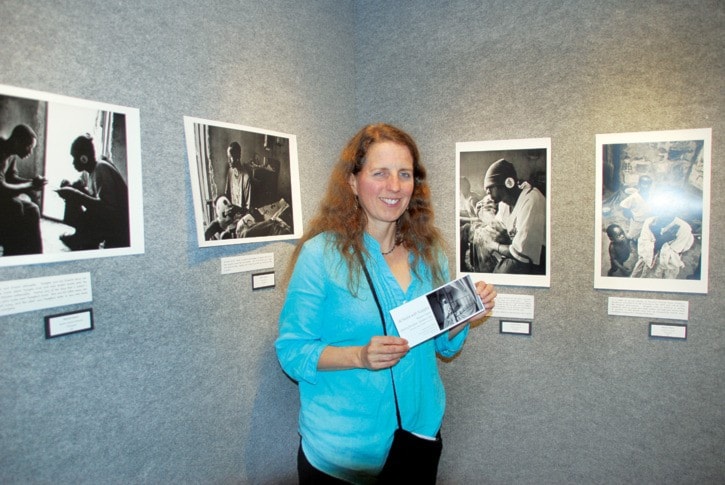Marjorie Clayton is not only an old school photographer, she is an intrepid traveller who prefers to travel alone — sometimes into dangerous places few women would dare to go alone.
Her photographs hanging in the Station House Gallery this month depict striking images of marginalized men living in Gambia, Africa.
They are captured the old fashioned way on film during a trip she made alone to the country.
The photographic series is called ‘At Home with Ysepha’ and is set with stories about each of the men in the photographs under the images.
Clayton says she prefers to start a photographic project as a stranger and travel alone rather than with a friend or a team.
“It’s intimidating for people to approach you if you are with other people,” Clayton says. “When I am alone I ask people questions and for directions which sparks conversation.”
She says she knows there are inherent dangers travelling as a lone female but says: “I have an amazing sixth sense that tells me when there is danger.” She points to one photograph of an individual during the opening of her show taken during an encounter which did make her uncomfortable enough to leave the conversation early.
Clayton says her dad Charlie Clayton, who died in June, started teaching her how to take photographs and use the dark room when she was only 11 years old.
“Both my parents are amazing,” Clayton says. She says her dad worked in the Ontario grain elevators during the day and was a drummer in a jazz band and avid photographer in his off hours.
“I have always been interested in culture and people,” Clayton says.
At 19 she went to Bolivia for three and a half months on a Canada World Youth student abroad project and visited again later on a Canada Arts Council grant. She has also worked in England for 14 years, and worked for various magazines.
She says the work in Gambia evolved out of a photographic project she started in Ghana in 1993.
For the trip to Gambia she says her editor put her in contact with Ysepha, a quiet man in his 30s, whom he had met briefly on a previous trip and who was earning his living as a hustler.
“My aim with this and most of my photo essays is to make sensitive, subtle and truthful photographs that allow the audience to understand and feel something for those photographed,” Clayton says in her artist’s statement.
‘At Home with Yusepha’ could not be created without the help and co-operation of Yusepha, his family, friends and fellow hustlers. Together we created this series so that their voices could be heard and their stories told.”
In Gambia she says hustlers are known as ‘Bumpsters’ and are looked upon by the public as lazy, delinquent scavengers.
They survive in poverty where unemployment is high and life expectancy low. Hustlers earn their money through a variety of commissions charged to tourists and businesses.
Depending on their skills and contacts they may act as a gofer, guide, translator or events organizer. She says what they do is illegal as they do not have the means or education to pass the officially recognized government ‘guide’ exam.
